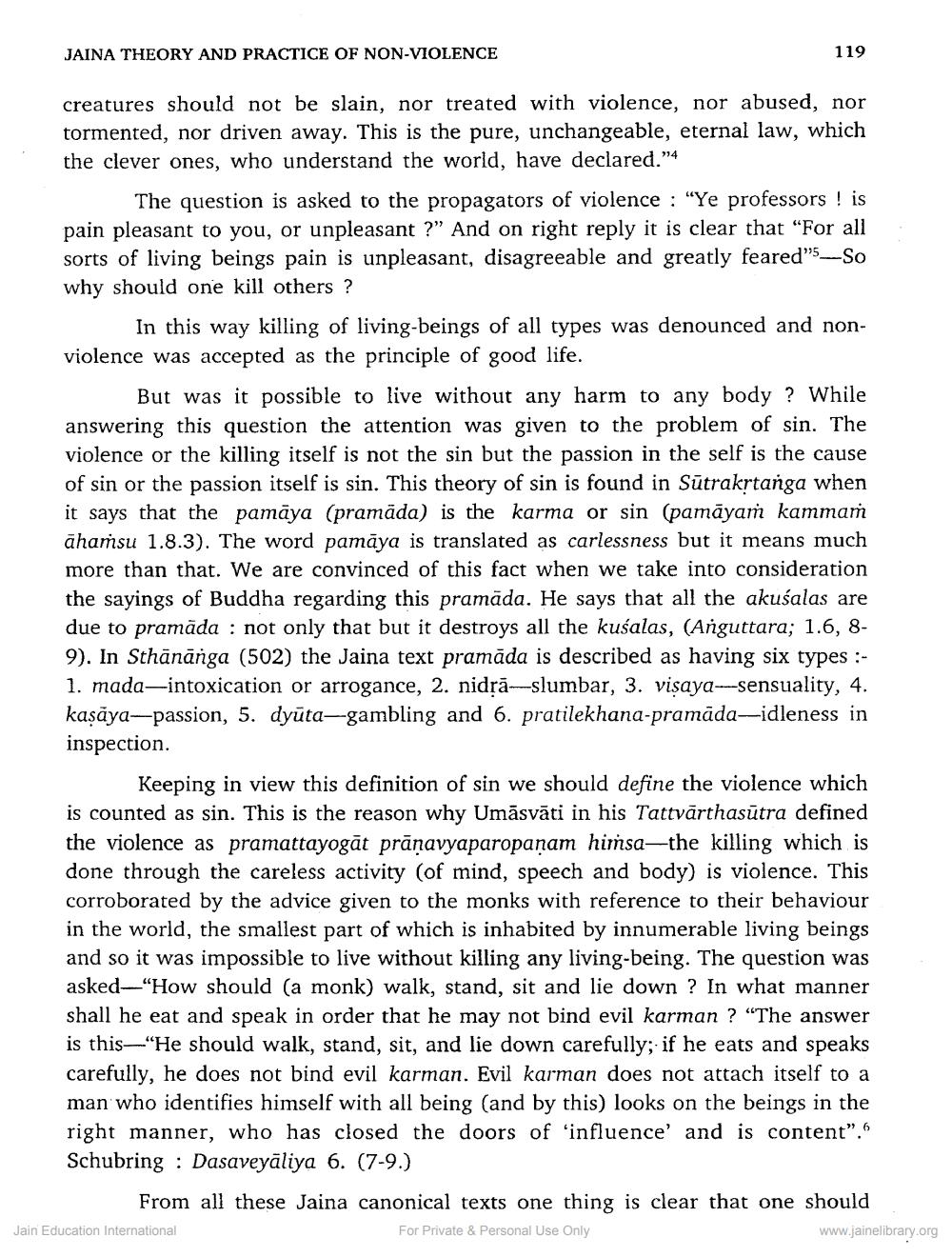________________
JAINA THEORY AND PRACTICE OF NON-VIOLENCE
119
creatures should not be slain, nor treated with violence, nor abused, nor tormented, nor driven away. This is the pure, unchangeable, eternal law, which the clever ones, who understand the world, have declared."
The question is asked to the propagators of violence : “Ye professors ! is pain pleasant to you, or unpleasant ?" And on right reply it is clear that "For all
of living beings pain is unpleasant, disagreeable and greatly feared"5_SO why should one kill others ?
In this way killing of living beings of all types was denounced and nonviolence was accepted as the principle of good life.
But was it possible to live without any harm to any body ? While answering this question the attention was given to the problem of sin. The violence or the killing itself is not the sin but the passion in the self is the cause of sin or the passion itself is sin. This theory of sin is found in Sūtrakrtanga when it says that the pamāya (pramāda) is the karma or sin (pamāyaḥ kammam āhamsu 1.8.3). The word pamāya is translated as carlessness but it means much more than that. We are convinced of this fact when we take into consideration the sayings of Buddha regarding this pramāda. He says that all the akusalas are due to pramāda : not only that but it destroys all the kusalas, (Anguttara; 1.6, 89). In Sthānānga (502) the Jaina text pramāda is described as having six types :1. mada—intoxication or arrogance, 2. nidrā-slumbar, 3. visaya-sensuality, 4. kasaya-passion, 5. dyūta-gambling and 6. pratilekhana-pramāda-idleness in inspection.
Keeping in view this definition of sin we should define the violence which is counted as sin. This is the reason why Umāsvāti in his Tattvārthasūtra defined the violence as pramattayogāt prānavyaparopanam himsa—the killing which is done through the careless activity (of mind, speech and body) is violence. This corroborated by the advice given to the monks with reference to their behaviour in the world, the smallest part of which is inhabited by innumerable living beings and so it was impossible to live without killing any living-being. The question was asked—“How should (a monk) walk, stand, sit and lie down ? In what manner shall he eat and speak in order that he may not bind evil karman ? "The answer is this—“He should walk, stand, sit, and lie down carefully; if he eats and speaks carefully, he does not bind evil karman. Evil karman does not attach itself to a man who identifies himself with all being (and by this) looks on the beings in the right manner, who has closed the doors of 'influence and is content". Schubring : Dasaveyāliya 6. (7-9.)
From all these Jaina canonical texts one thing is clear that one should Jain Education International For Private & Personal Use Only
www.jainelibrary.org




